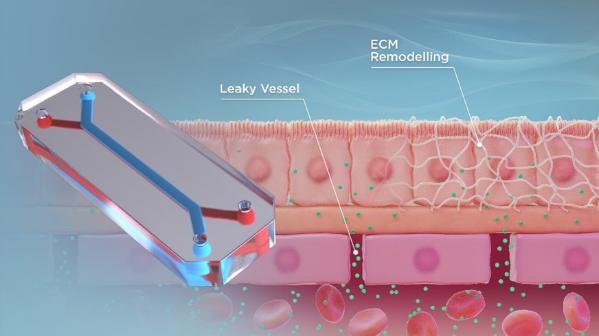Organ-On-Chip

Create a multi-tissue platform modelling lung metastasis to interrogate the presence and role osteosarcoma-derived secreted factors play in the formation of the pre-metastatic niche
Currently, secondary lung metastasis is the most critical clinical factor for osteosarcoma patients, with 70% of those who develop lung metastasis succumbing to the disease within 3 years. Accelerating cures for patients with poor outcomes remains a challenge, and this is, in part, due to the fact that osteosarcoma is a relatively rare disease. Therefore, recruiting enough eligible participants to conduct clinical trials is a difficult endeavour.
An organ-on-a-chip device is a three-dimensional microfluidic device that recapitulates the complex structures and functions of living human organs. These devices consist of transparent, flexible plastic material, roughly the size of a USB memory stick. Within the device, intricate hollow microfluidic channels are lined with living human cells, 3D tissues, and blood vessels. These living, three-dimensional replicas of human organs offer insights into their inner workings and the effects that drugs can have on them, all without involving humans or animals.
Our lab aims to use these devices to understand why osteosarcoma preferentially metastasizes to the lung and potentially identify a novel therapeutic target or strategy for combating osteosarcoma metastatic disease progression. This work is funded by Horizon Europe ERC Starting Grant.
